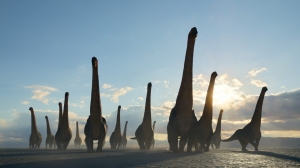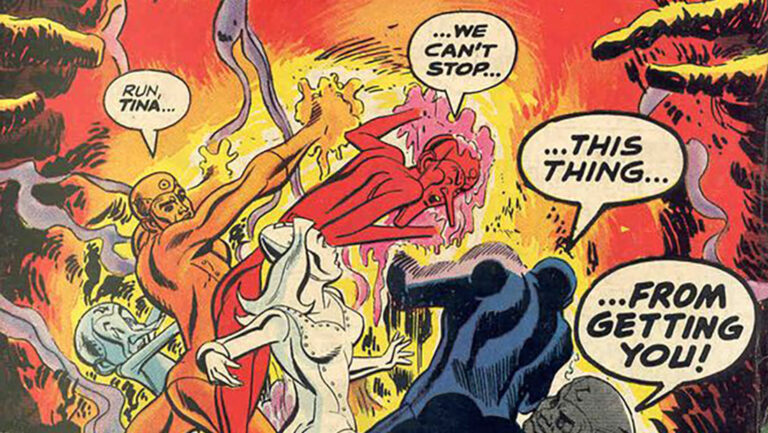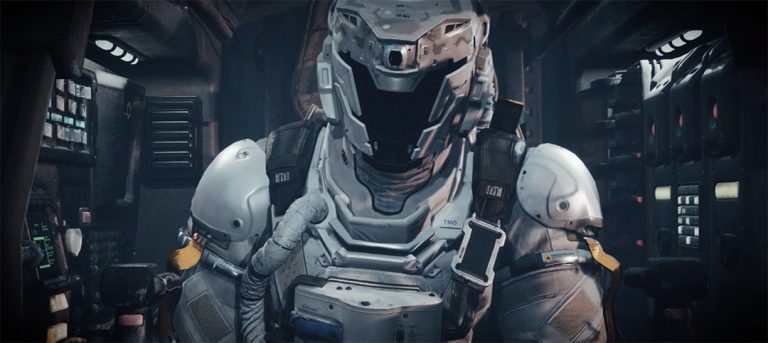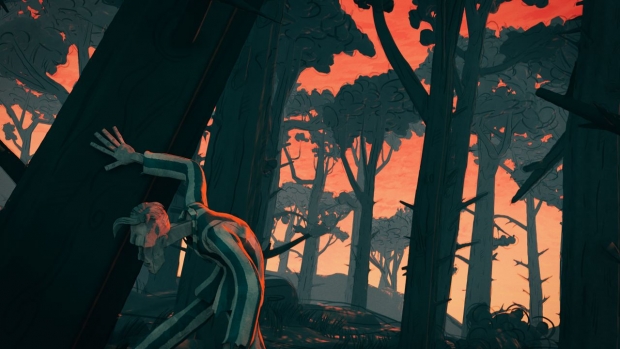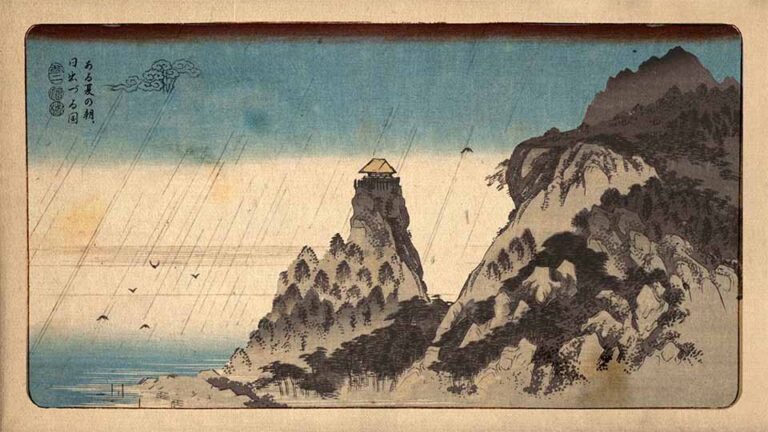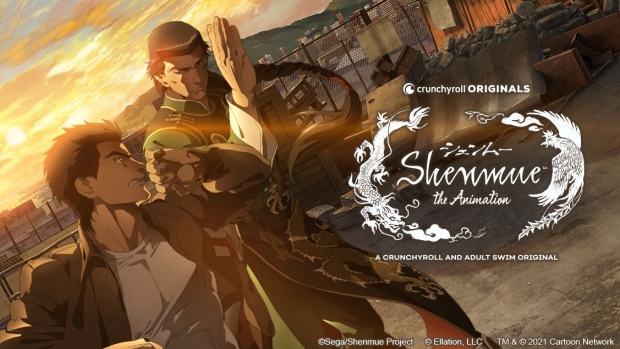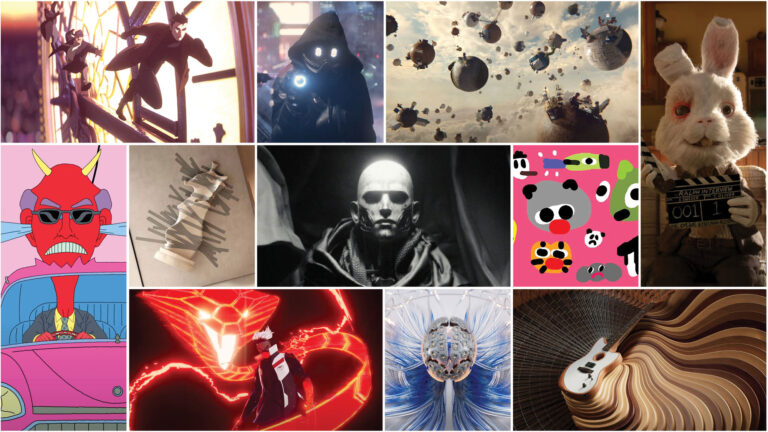Prehistoric Planet provided an opportunity to correct some popular cultural misconceptions. “We wanted to show the T-Rex more scientifically accurate than what people have seen before,” notes Jones. “Even the sounds that it makes. Our scientists were saying based on its morphology, the T-Rex would have hissed more than roared. Then we wanted to frame the T-Rex as what we know today. It’s a big body. He was a predator but also scavenger. The T-Rex wasn’t that fast so he couldn’t easily catch prey. But he relied on being the biggest and baddest, so he would walk up and steal kills.”
Throughout the series, audience members actively participate. “The story I like to tell people is when you’re trying to figure out what wolves or lions do and then you just look on YouTube to see what people have curated and are saying,” notes Valdez. “’Look how cute he is.’ Or ‘He looks guilty.’ There is this fascinating thing with that projection we do with each other, but even onto animals. You have that working for you already.” The show’s episodes represent particular biomes and are titled accordingly: “Coasts,” “Deserts,” “Freshwater,” “Ice Worlds,” and “Forests.” “If you had Mike Gunton here, he would be reminding us all that this is a story of the planet,” says Jones. “The reason that’s it framed by biomes is because the Natural History Unit takes a point of view that there is a fascinating relationship between flora, fauna, and the Earth itself. Part of the reason why dinosaurs aren’t here is that there were massive changes to our planet between then and now. The Cretaceous Period had enough similarities to today’s Earth that you could fill a lot of the backgrounds on today’s Earth. Then you frame it into areas of the planet itself and what are the stories of living creatures in each of those areas.”

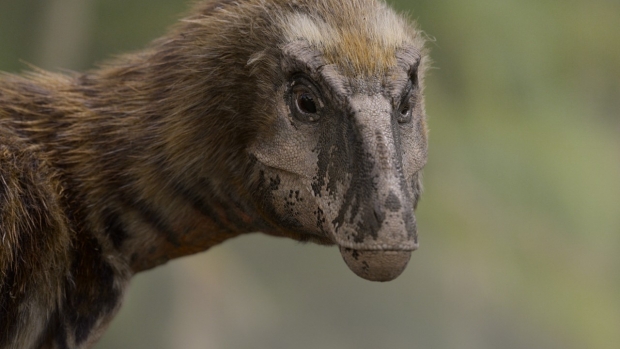
The pair always kept in mind the visual language of a documentary. According to Jones, “You will notice with a lot of the shots the feet might be framed out; that’s intentional. In a lot of natural history documentaries, you don’t always see the feet touching the ground. For us, that’s a savings because you’re not dealing with interaction and shadow casting. Our cuts are economical in a way that makes it feel like you’re seeing more than what you’re seeing.”
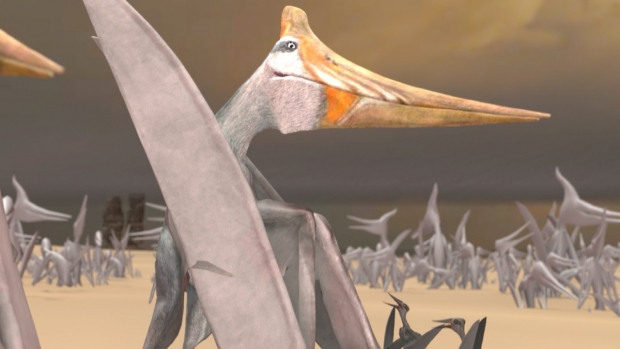
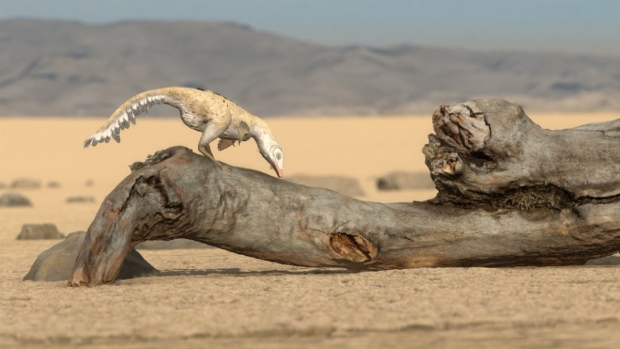

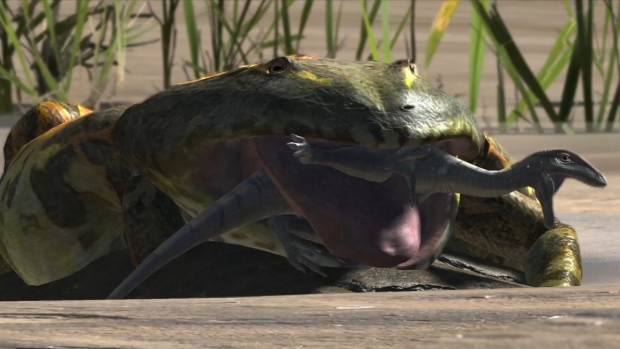

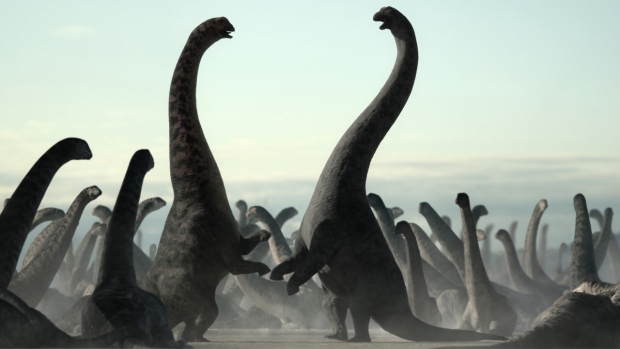
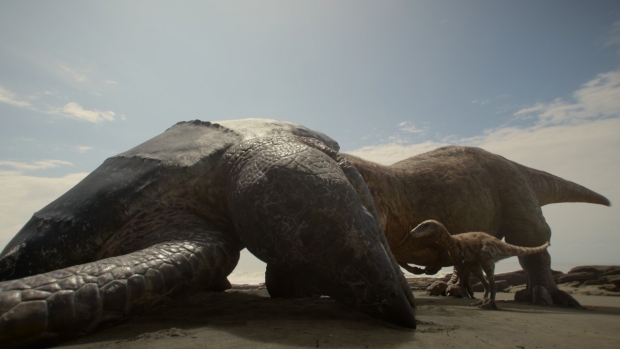
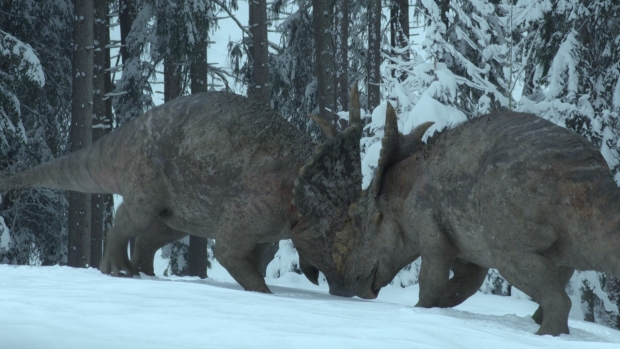
“Ice Worlds” features a family of Pachyrhinosauruses being hunted by a Nanuqsaurus. “It is done well,” Jones shares. “The animation team nailed it trying to get the detail of family protection. The babies make it out. The old bull is too tired to keep running and knows that if he sacrifices himself the rest can live. It’s a beautiful moment.”
“Andy and I both come from an animation background and that’s a little different than everybody else in the visual effects industry who start to supervise things,” notes Valdez. “You are already tuned into story. We’re trying to figure out ways to make every scene be something that has a progression and a beginning, middle, and end. When you start channeling that point of view onto photorealism you’re suddenly in this weird place of balancing aesthetics and physics.”
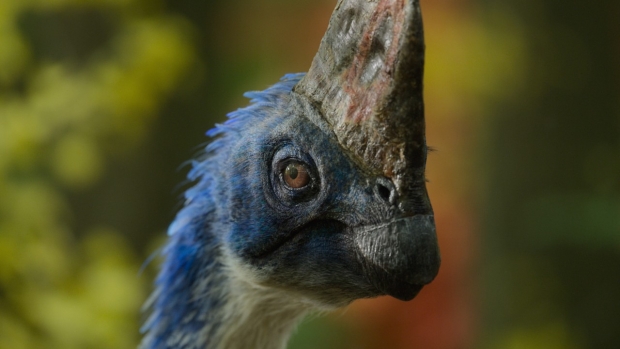
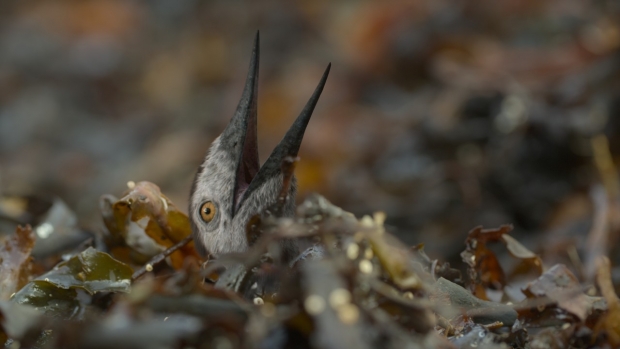
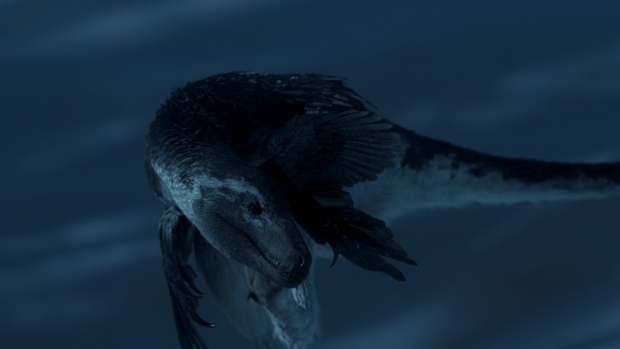
Trevor Hogg is a freelance video editor and writer best known for composing in-depth filmmaker and movie profiles for VFX Voice, Animation Magazine, and British Cinematographer.
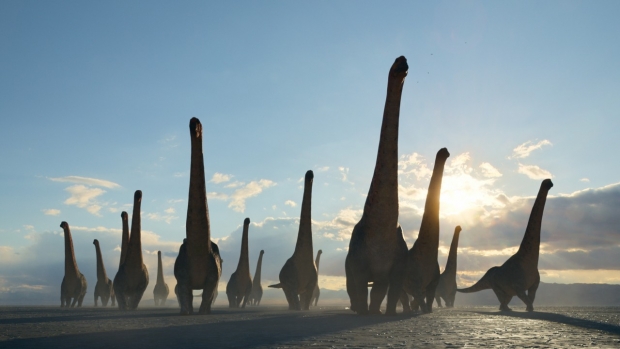
On the behalf of Apple TV+, filmmaker Jon Favreau (The Jungle Book) and Mike Gunton, Creative Director, Factual at BBC Studios, have executive produced the five-part natural documentary Prehistoric Planet, which imagines what life was like when dinosaurs roamed the Earth during the Late Cretaceous period, 66 million years ago. The Oscar-winning duo of visual effects supervisor Adam Valdez (The Lion King) and animation supervisor Andy Jones (Avatar) were hired to direct the episodes, with MPC digitally resurrecting and inserting the extinct creatures into footage captured by the BBC’s Natural History Unit. The famed Sir David Attenborough narrates the series.
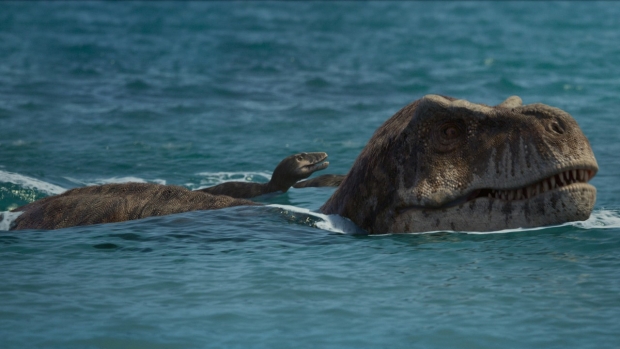
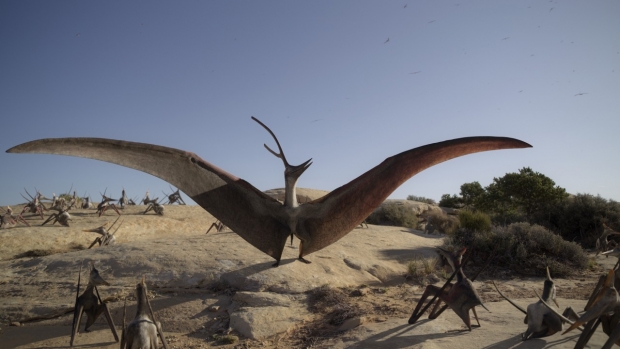
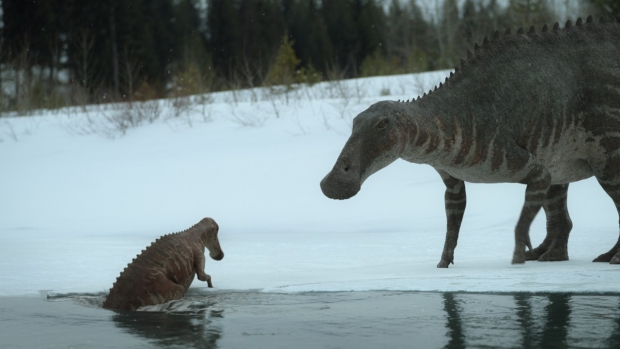
The biggest challenge for Valdez was learning how to shoot underwater. “I did a lot of underwater stuff and that was new for me,” he reveals. “It’s tricky to tell stories in a space where you don’t have any spatial references. That was probably the hardest thing for me on the show. In terms of what people are going to see, the Pachyrhinosaurus and Nanuqsaurus sequence was one of the big thumping dramatic ones. It was fun.”
A young Triceratops gets separated from his mother and has to navigate through a dark cave in “Forests.” “He’s super cute,” chuckles Jones. “I want a little model of him on my desk! He is learning how to eat the vegetation with the parents and there is a scientific fact that these types of plants were toxic to even their stomachs, so the Triceratops needed a way to combat that. They ate this type of clay found in these caves. The caves are so dark that you’ll get trampled if you’re not sure footed or keeping up. The family keeps moving on through the cave and the baby is trying to find them. The family makes it out the other side and finds the clay while the baby is still sitting in there. At the end we do get a triumphant moment with the baby when he ultimately makes his way out of the cave and finds his mom, who teaches him how to eat the clay for the first time.”
“Deserts” explores how procreation has been a driving force of evolution. “That one was rooted in the idea there were differing morphologies in the males themselves and these crazy crests and shapes that you see in modern animals were evident back then,” remarks Valdez. “It’s the acknowledgement that there are some universal themes of competition when it comes to life. What is the value of ornamentation for mating? There is this phrase that evolution happens in the bedroom. It’s one thing to survive, it’s another thing to pass your genes on. Superior evolutionary steps don’t propagate into the population without reproduction. I cannot speak to how hormonally driven a Pterosaur is, but you see most males on the planet get worked up when it comes to mating time!” The competition can get quite fierce. “We mixed that Titanosaurus sequence with what you see with elephant seals today,” reveals Jones. “How one male rules them all and if you want access to his heirloom of females you have to beat him. An ultimate battle takes place to win the right for that.”
Sequences were extensively planned and prepped before plate photography commenced. “Adam and I did what we learned on The Lion King, which is a virtual production style where we would animate an entire beat and then cover it with a virtual camera,” explains Jones. “We would take an iPad and begin to frame our shot and figure out the locations and the scale and size of the lens. Should it be close or wide? Edit it together. We figured out exactly where our sequence needed to be. Then we would go and find a location to shoot it.”

Noting how natural history documentaries influenced The Lion King, Valdez says, “Andy and I probably sat through a million hours of Jon Favreau meetings, dailies, and reviews trying to analyze and get down what sort of looks effortless but actually takes a lot of attention and craft to get there; that’s what dovetailed into this one.”
